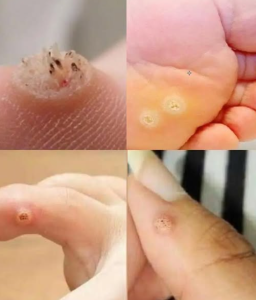Be Very Careful: If You Notice This Skin Growth, It Could Be Serious
Your skin is your body’s largest organ—and it’s also one of the best indicators of your overall health. While many skin changes are harmless, some growths or changes in texture, color, or shape may be signs of something far more serious. One warning sign you should never ignore: unusual skin growths that change over time or look suspicious.
What to Watch For
The most concerning type of skin growth is one that could signal skin cancer, particularly melanoma, the deadliest form. While not every mole or bump is dangerous, experts urge people to be vigilant when they notice changes. This includes new growths or changes in existing moles or spots.
Use the ABCDE rule to help identify potentially dangerous skin changes:
-
A – Asymmetry: One half of the mole doesn’t match the other.
-
B – Border: Edges are irregular, ragged, notched, or blurred.
-
C – Color: Uneven shades of brown, black, tan, red, white, or blue.
-
D – Diameter: Larger than 6mm (about the size of a pencil eraser), though some melanomas are smaller.
-
E – Evolving: Any change in size, shape, color, or elevation—or new symptoms like bleeding or itching.
Types of Skin Growths That Could Be Dangerous
-
Actinic Keratosis – These are rough, scaly patches that develop on sun-exposed areas, often as a result of long-term UV exposure. They can become squamous cell carcinoma if left untreated.
-
Basal Cell Carcinoma – Often appears as a translucent bump, sometimes pink or pearly. It’s the most common skin cancer and grows slowly but can cause damage if ignored.
-
Squamous Cell Carcinoma – May appear as a firm, red nodule or a scaly sore that doesn’t heal. It can spread if not treated early.
-
Melanoma – The most dangerous, often appearing as a dark, irregular mole. It can spread quickly to other organs if not caught early.
When to See a Doctor
If you notice any skin growth that is new, changing, painful, itchy, bleeding, or not healing, see a dermatologist immediately. Early detection is key—most skin cancers are highly treatable when found early.
Even if a growth seems small or harmless, it’s better to be safe than sorry. A quick check could save your life.
Prevention Tips
-
Wear sunscreen daily (SPF 30 or higher).
-
Avoid tanning beds.
-
Do regular self-checks using a mirror.
-
Get an annual skin exam from a dermatologist, especially if you have a history of sunburns or skin cancer in your family.
Final Thoughts
Your skin may be trying to tell you something important. A strange growth, changing mole, or persistent patch should never be ignored. By staying alert and getting prompt medical attention, you can protect your health and possibly catch a serious condition before it becomes life-threatening.

